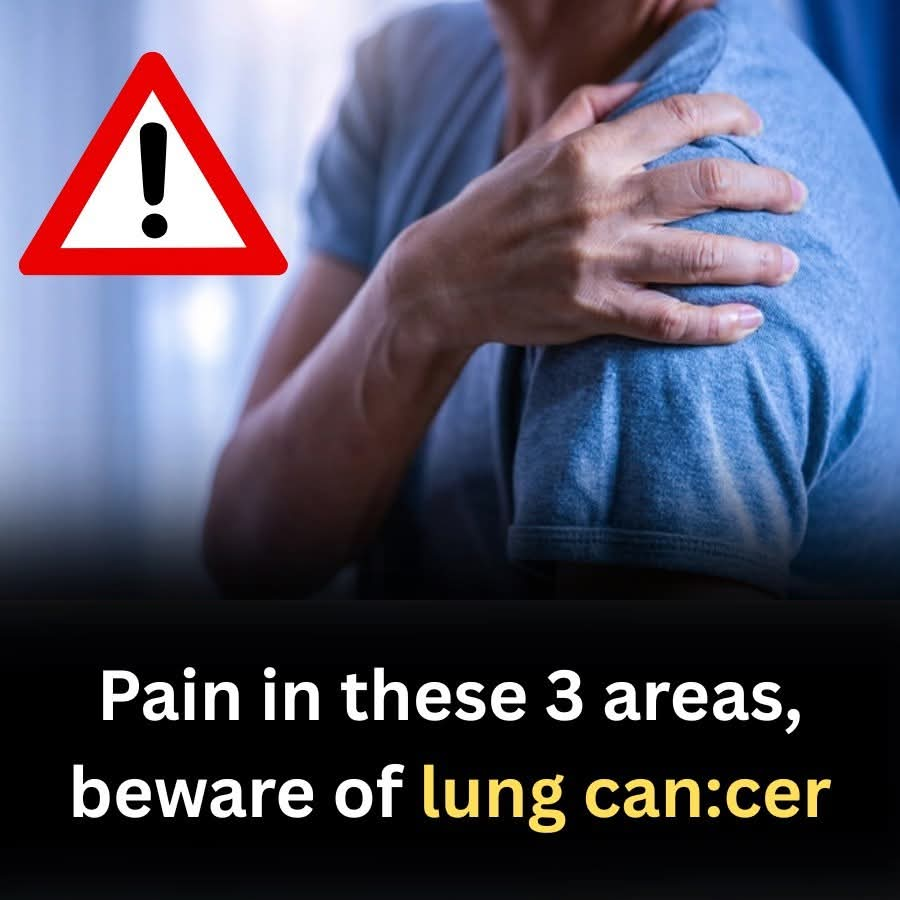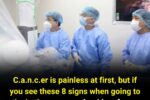Pain in These 3 Areas Could Be a Warning Sign of Lung Cancer — Don’t Ignore Them

Lung cancer is often called the “silent killer” because it can develop quietly, with symptoms showing up only in later stages. But in many cases, the body gives subtle warning signs through pain — and not just in the chest.
If you feel persistent pain in any of these three areas, it might be more than just strain or stress. It could be your body telling you something more serious is going on.
Let’s break down the 3 key areas where pain could signal lung cancer — especially if it doesn’t go away with rest or medicine.
1. Chest Pain
This might seem obvious, but not all chest pain feels the same. Lung cancer chest pain is often:
- Persistent and dull or aching
- Worsens with deep breaths, laughing, or coughing
- Doesn’t go away with usual pain relief
What causes it? The tumor could be growing and pressing on nearby tissues, nerves, or even the chest wall. Some people also experience tightness or heaviness in the chest rather than sharp pain.
If you’re experiencing chest pain that lasts for weeks, especially along with coughing or breathlessness, don’t ignore it.
2. Shoulder or Upper Back Pain
This one surprises many people. Pain in the shoulder or upper back might not seem related to your lungs — but it can be.
A type of lung cancer called a Pancoast tumor grows at the top of the lungs and can press on nearby nerves, leading to:
- Severe shoulder pain
- Pain between the shoulder blades
- Pain that spreads down the arm or into the hands
If this pain comes out of nowhere, doesn’t improve with rest, or gets worse at night, it’s worth getting checked — especially if you’re a smoker or exposed to pollutants.
3. Bone Pain (Ribs, Spine, or Hips)
When lung cancer spreads (metastasizes), it often goes to the bones. This can lead to:
- Deep, aching pain in your ribs, spine, hips, or even legs
- Pain that worsens at night or while resting
- Tenderness or fractures without injury
Bone pain from cancer feels very different from muscle pain — it’s constant, hard to relieve, and gradually gets worse.
Final Thoughts
Not every ache is a sign of cancer — but pain that lingers, worsens, or shows up without explanation should never be ignored. Lung cancer doesn’t always start with breathing issues. Sometimes, pain is the first red flag.
If you’re over 40, have a history of smoking, or have been exposed to pollution or chemicals, pay close attention to your body. Early detection could save your life.
FAQs
Q1: Can back or shoulder pain be the only symptom of lung cancer?
A: Yes. Especially in early stages, pain might show up before breathing issues.
Q2: What kind of chest pain should I worry about?
A: Persistent, dull, or aching pain that worsens with breathing or coughing.
Q3: Is bone pain from lung cancer common?
A: Yes, especially in later stages when cancer spreads to bones like ribs or spine.
Q4: Should I see a doctor for unexplained body pain?
A: Absolutely. It’s always better to rule out serious causes early on.






